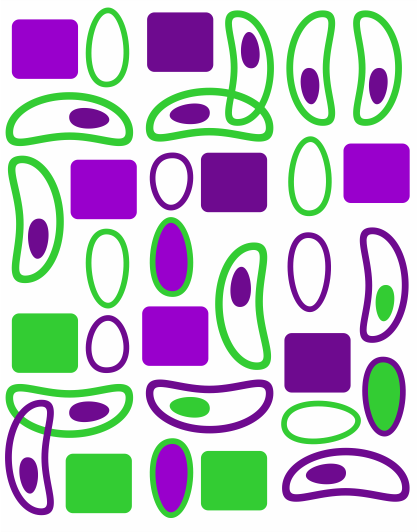Assessment of Toxoplasmosis-Related Knowledge Among Patients and Their Companions at the University Hospital of Maringá
DOI:
https://doi.org/10.17696/2318-3691.31.01.2025.268Keywords:
Brazil, Public Health, Toxoplasmosis, Ocular, Surveys and Questionnaires, Health Knowledge, Attitudes, Practice, Disease Transmission, Infectious, Primary PreventionAbstract
Introduction: Toxoplasmosis is a widely distributed parasitic disease caused by the protozoan Toxoplasma gondii. It typically causes mild symptoms such as lymphadenopathy and fever in immunocompetent individuals, but can lead to more severe symptoms in immunocompromised patients and congenital infections. Objective: Assess the knowledge of patients and their companions regarding various aspects of Toxoplasmosis. Methods: This study was conducted at the Regional University Hospital of Maringá from July to September 2024. Questionnaires were administered to patients and their companions about the manifestations, modes of transmission, and prophylaxis of Toxoplasmosis. Results: A total of 30 men and 40 women were interviewed, predominantly aged between 25 and 59 years (64.2%), with at least a high school diploma (71.4%) and prior knowledge of Toxoplasmosis (87.1%). The most common sources of infection mentioned were contact with cat feces (81.4%), consumption of raw vegetables (55.7%), and undercooked meats (52.9%). The most frequently cited symptoms associated with Toxoplasmosis were problems during pregnancy (75.7%) and fever (72.9%). Itching (57.1%) and a burning sensation (41.4%) were the most reported among ocular symptoms. Only one patient reported having the disease, with involvement of the left eye. Conclusion: Most respondents understand the risks associated with Toxoplasmosis, but the presence of myths and inadequate practices shows that measures to analyze and spread knowledge about this disease could be effective for its prevention and control.
References
1. Barbosa HS, Muno RM, Moura MA. O ciclo evolutivo. In: Souza W, Belfort R Jr, editors. Toxoplasmose & Toxoplasma gondii [Internet]. Rio de Janeiro: Editora Fiocruz; 2014. p. 33-45. Available from: https://doi.org/10.7476/9788575415719
2. Miyagaki M, Zong Y, Yang M, Zhang J, Zou Y, Ohno-Matsui K, et al. Ocular Toxoplasmosis: advances in toxoplasma gondii biology, clinical manifestations, diagnostics, and therapy. Pathogens. 2024;13(10):898. doi: 10.3390/pathogens13100898
3. Rodrigues NJL, Manzini S, Pereira JKF, Cruz TS, Bertozzo TV, Moraes GN, et al. Atualizações e padrões da toxoplasmose humana e animal: revisão de literatura. Vet Zootec. 2022;29:1-15. https://doi.org/10.35172/rvz.2022.v29.704
4. Fereig RM, El-Aldfy El-Sayed, Alharbi AS, Abdelraheem MZ, Almuzaini AM, Omar MA, et al. Seroprevalence of Toxoplasma gondii in cattle in Southern Egypt: do milk and serum samples tell the same story? Animals. 2024;14(21):3122. https://doi.org/10.3390/ani14213122
5. Capanema GMV, Albuquerque ÚV, Lage FS, Aquino IP, Mendes LRCN, Macedo LB, et al. Toxoplasmose na gestação e suas repercussões: aspectos etiopatogênicos, métodos diagnósticos, condutas terapêuticas e medidas preventivas. Braz J Dev. 2022;8(10):65258-73. DOI: https://doi.org/10.34117/bjdv8n10-021
6. Gundeslioglu OO, Haytoglu Z, Esen E, Alabaz D, Cay U, Ozlu F, et al. Congenital Toxoplasmosis and Long-term Outcomes. Turkiye Parazitol Derg. 2024;48(1):8-14. doi: 10.4274/tpd.galenos.2024.74046
7. Ross EC, Olivera GC, Barragan A. Early passage of Toxoplasma gondii across the blood–brain barrier. Trends Parasitol. 2022;38(6):450-61. doi: 10.1016/j.pt.2022.02.003
8. Barcelos NB. Resposta imunológica contra o Toxoplasma gondii em pacientes imunodeprimidos pelo vírus HIV/AIDS. In: Saúde em foco: doenças emergentes e reemergentes. Vol. 1 [Internet]. 2020 [cited 2024 Dec 19]. p. 491–509. Available from: https://downloads.editoracientifica.org/articles/200901270.pdf
9. Khan IA, Moretto M. Immune responses to Toxoplasma gondii. Curr Opin Immunol. 2022;77:102226. doi: 10.1016/j.coi.2022.102226
10. Martini A, Pietrafesa E, Rondinone BM, Iavicoli S, D'amelio S, Cavallero S, et al. Toxoplasmosis and knowledge: what do the Italian women know about? Epidemiol Infect. 2020;148:e239. doi: 10.1017/S0950268820002393
11. Baghdadi HB, Abbas I, Rizk MA. Cross-sectional community-based study to assess the awareness of toxoplasmosis in Saudi Arabia. Int J Environ Health Res. 2024;34(3):1776-87. https://doi.org/10.1080/09603123.2023.2244892© 2023 Informa UK Limited, trading as Taylor & Francis Group
12. Araújo ECS, Castro MVM, Dias Filho CAA. Relevância clínica do conhecimento acerca da toxoplasmose congênita por parte das gestantes. Rev Eletrônica Acervo Saúde. 2024;24(9):e16962. https://doi.org/10.25248/reas.e16962.2024
13. Benali EM, Itikawa M, Oliveira C, Leite A, Montanholi V. Avaliação do conhecimento de pacientes e acompanhantes do Hospital Universitário de Maringá sobre toxoplasmose. Mendeley Data. 2024;V1. DOI:10.17632/2yrbry6x7v.1
14. Sguissardi V. Decifrando a história e o estigma do analfabetismo no Brasil. Educ Soc. 2011 [cited 2024 Dec 17];32(114):245-9. Available from: https://www.scielo.br/j/es/a/6RtQQnCM7qsdbKFw3BNS9PP/?format=pdf&lang=pt
15. Molan A, Nosaka K, Hunter M, Wang W. Global status of Toxoplasma gondii infection: systematic review and prevalence snapshots. Trop Biomed. 2019 [cited 2024 Sep 27];36(4):898-925. Available from: https://www.msptm.org/files/Vol36No4/898-925-Molan-A.pdf
16. National Commitee for Health Tecnology Incorporation info the SUS – Conitec. Newborn screening for congenital Toxoplasmosis. Brasília, DF: Conitec; 2020 [cited 2024 Dec 18]. 5 p. Available from: https://www.gov.br/conitec/pt-br/midias/consultas/relatorios/en2020/20200915_report516_newbor-screening_congenitaltoxoplasmosis.pdf
17. Gomes BEL, Frazão RM. Revisão de literatura: a importância do diagnóstico e manejo da Toxoplasmose ocular. Braz J Dev. 2022;8(10):67446-62. : https://doi.org/10.34117/bjdv8n10-172
18. Sauer A, Schaeffer M, Serrar Y, Kodjikian L. Toxoplasmose oculaire. J Fr Ophtalmol. 2024;47(10):104334. https://doi.org/10.1016/j.jfo.2024.104334
19. Vasconcellos ML. Avaliação da qualidade de vida em pacientes com toxoplasmose ocular atendidos no Laboratório de Pesquisa Clínica em Oftalmologia Infecciosa do Instituto Nacional de Infectologia (INI). Rio de Janeiro: Fiocruz; 2020.
20. Nascimento TPS, Silva AJR, Martinazzo GM, Bezerra LVMA, Oliveira LC, Souza LM, et al. Os impactos da desinformação sobre a toxoplasmose na gravidez: formas de transmissão, prevenção e tratamento. Braz J Implant Health Sci. 2024;6(2):1349-57. https://doi.org/10.36557/2674-8169.2024v6n2p1349-1357
21. Melamed J, Eckert GU, Spadoni VS, Lago EG, Uberti F. Ocular manifestations of congenital toxoplasmosis. Eye. 2010 [cited 2024 Sep 27];24(4):528-34. Available from: https://www.nature.com/articles/eye2009140
22. McAuley J, Boyer KM, Patel D, Mets M, Swisher C, Roizen N, et al. Early and longitudinal evaluations of treated infants and children and untreated historical patients with congenital toxoplasmosis: the Chicago Collaborative Treatment Trial. Clin Infect Dis. 1994;18(1):38-72. doi: 10.1093/clinids/18.1.38
23. Swisher CN, Boyer K, McLeod R. Congenital toxoplasmosis: the Toxoplasmosis study group. Semin Pediatr Neurol. 1994 [cited 2024 Sep 27];1(1):4-25. Available from: https://pubmed.ncbi.nlm.nih.gov/9422215/
Downloads
Published
Issue
Section
Categories
License
Copyright (c) 2025 Arquivos de Ciências da Saúde

This work is licensed under a Creative Commons Attribution-NonCommercial-ShareAlike 4.0 International License.










